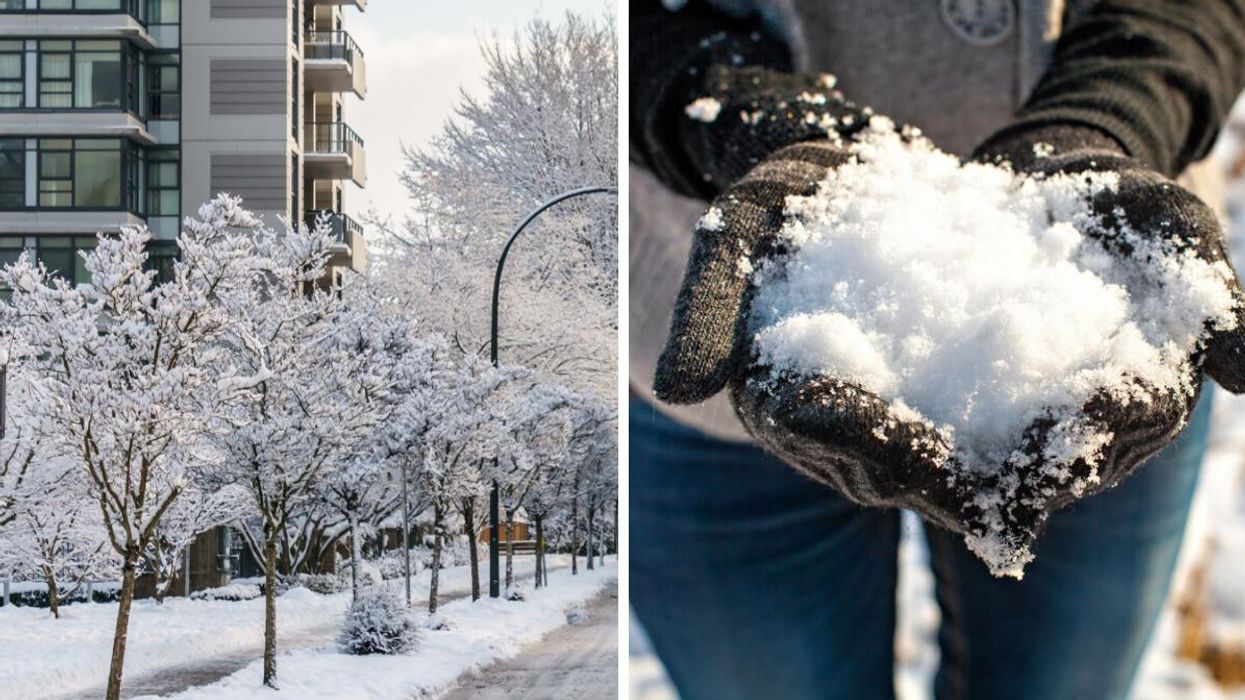Arctic Outflow Warnings Are In Effect In BC & There's A 'Risk Of Frostbite' In These Places
Bundle up!

Frozen streets of Vancouver. Right: Cupped hands holding snow.
Multiple public weather alerts have been issued for different parts of B.C. due to an Arctic outflow, which is predicted to hit some areas this week.
The Artic Outflow warnings from Environment Canada are in effect from today until Friday, with the potential hazards of both "frostbite and hypothermia."
The areas that could be affected by this Arctic outflow include the inland and coastal sections of Central Coast B.C., the Fraser Valley, the inland and coastal sections of North Coast B.C., and Whistler, B.C.
All of these areas within the province could reach frigid temperatures and wind chill values as low as minus 20 tonight.
With the anticipation of freezing temperatures, Environment Canada has shared a few tips to stay safe and avoid hypothermia during these extremely cold temperatures.
It is recommended to minimize any exposed skin, which can be done by wearing hats, scarves, mittens or gloves. They also said to make sure shelter is available for both pets and outdoor animals.
The Government of Canada has also released a "Wind Chill Safety Fact Sheet", which includes "Seven Steps To Cold Weather Safety."
Some tips include listening to the weather forecast and keeping up with Environment Canada updates, planning ahead, dressing warm, seeking shelter, staying dry, keeping active to stay warm and being aware of any symptoms that may be due to frostnip, frostbite or hypothermia.
Some symptoms of frostbite include white and waxy skin that is hard to the touch, as well as numbness and loss of sensation in affected areas.
If frostbite occurs, the Government suggests warming the affected area gradually, with either body heat or warm water and avoiding applying any direct heat, which can cause the skin to burn.
